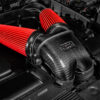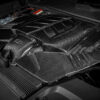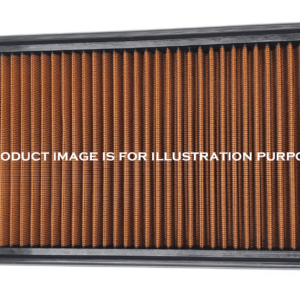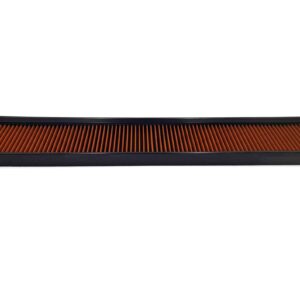Eventuri Bentayga 4.0 TFSI V8 Twin Turbo Intake EVE-4V8TT-CF-INT
3.289,99€ WITH TAX
Upgrade your Bentley Bentayga 4.0 TFSI V8 Twin Turbo with the Eventuri Bentayga 4.0 TFSI V8 Twin Turbo Intake EVE-4V8TT-CF-INT, designed for improved airflow, faster turbo spool, and enhanced performance. This carbon fiber intake delivers up to 28hp gains, reduces turbo lag, and optimizes throttle response. Engineered for maximum efficiency, it ensures a seamless bolt-on installation.
We suggest that you ask for the exact delivery cost and time.
Eventuri Bentayga 4.0 TFSI V8 Twin Turbo Intake EVE-4V8TT-CF-INT
Upgrade your Bentley Bentayga 4.0 TFSI V8 Twin Turbo with the Eventuri Bentayga 4.0 TFSI V8 Twin Turbo Intake EVE-4V8TT-CF-INT, engineered for maximum airflow and efficiency. This high-performance intake delivers 14-20hp gains on stock mapping and up to 28hp with Stage 1 tuning, optimizing throttle response and turbo efficiency.
Unmatched Performance & Dyno-Proven Gains
Tested by Eurocharged Canada, this intake system has shown consistent horsepower and torque gains across the RPM range. By enhancing air delivery to the turbo inlets, this system allows the turbos to spool faster, reducing lag and improving acceleration. The result is a more responsive driving experience with a stronger pull to redline.
Premium Carbon Fiber Construction
Designed for 2020+ RSQ8/SQ8/SQ7, 2019+ Urus, 2020+ Cayenne Turbo, and 2019+ Bentayga, this full carbon fiber intake system is engineered with:
- Enlarged Carbon Fiber Airbox Lid – Increases intake volume for improved airflow.
- Carbon Fiber Flow Collector – Enhances air distribution with a smooth, high-flow design.
- Bespoke High-Flow Cone Filters – Optimized for maximum filtration and airflow.
- Thermoplastic Turbo Inlets with Dimpled Surface – Reduces turbulence and increases air velocity.
- Custom Reinforced Silicone Hoses – Ensures durability and precision fitment.
- CNC Machined Breather Ports – Provides a seamless connection for improved reliability.
Innovative Turbo Inlets with Dimpled Technology
One of the biggest airflow restrictions in the stock intake system is the turbo inlets. Eventuri has redesigned these components, removing restrictive sections and increasing the internal volume for smoother, faster airflow. The dimpled internal surface further reduces frictional pressure loss, improving flow efficiency and turbo response.
Dyno-Tested Performance Gains
- Stock ECU Tune: +14-20hp | +17-21 ft-lb
- Stage 1 ECU Tune: +25-28hp | +20-23 ft-lb
Note: Performance gains vary based on ECU tuning and modifications.
Why Choose the Eventuri Bentayga 4.0 TFSI V8 Twin Turbo Intake EVE-4V8TT-CF-INT?
- Proven Power Gains – Dyno-tested for real-world performance improvements.
- Enhanced Turbo Response – Faster spool, improved throttle response, and stronger acceleration.
- Premium Carbon Fiber Construction – Lightweight, durable, and aesthetically stunning.
- Optimized Airflow Design – Larger filters, high-flow collector, and precision-engineered turbo inlets.
- Easy Installation – Direct bolt-on replacement for the factory intake system.
Upgrade your Bentley Bentayga 4.0 TFSI V8 with the Eventuri EVE-4V8TT-CF-INT Intake System for maximum performance, sound, and efficiency.
The Eventuri Bentayga 4.0 TFSI V8 Twin Turbo Intake EVE-4V8TT-CF-INT Installation Guide
Download the guide here.
Download Installation Guide
More from Eventuri
| Product manufacturer | EVENTURI |
|---|---|
| Brand | Air Intake |
| Car brand | BENTLEY |
| Eventuri Car Model | Bentayga |
| Eventuri Filter Type | L2 |
Only logged in customers who have purchased this product may leave a review.























Reviews
There are no reviews yet.